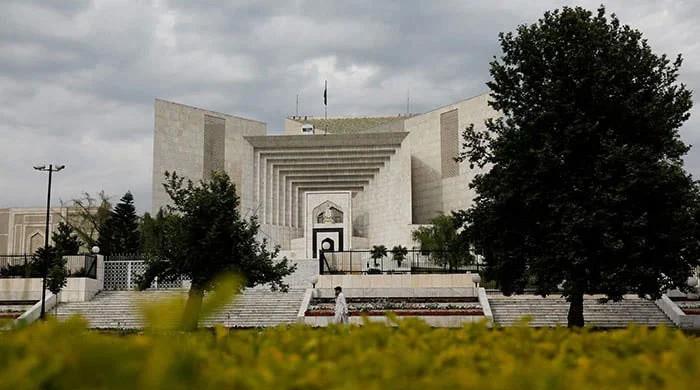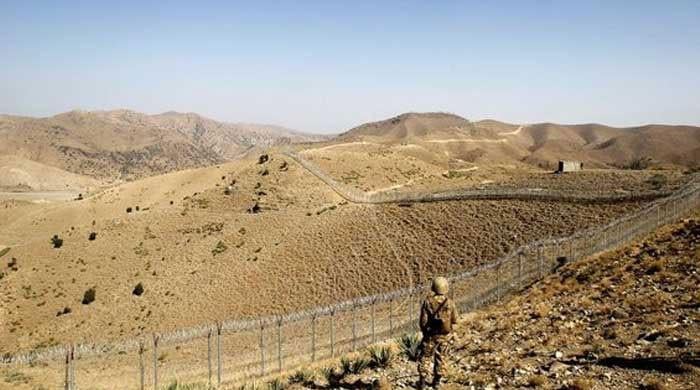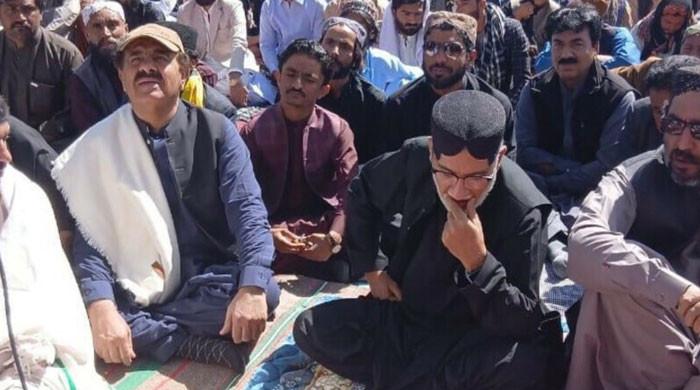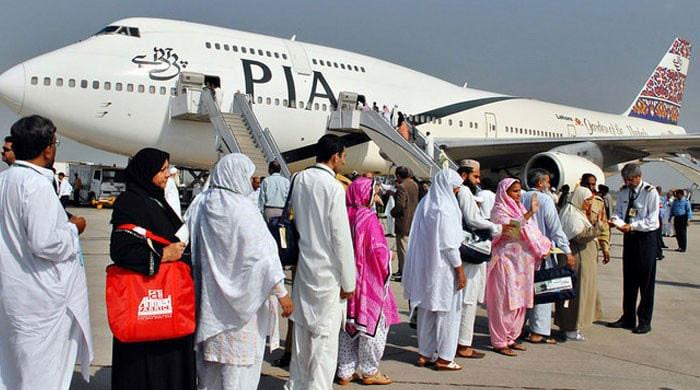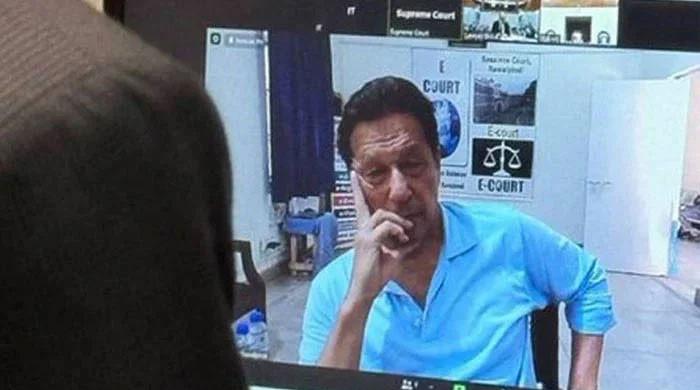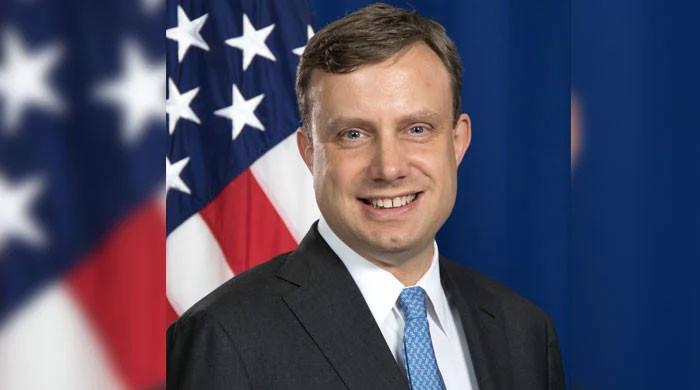All you need to know about the US-Taliban peace agreement
The US and the Taliban have signed a historic deal in Doha. But what is it all about?
February 29, 2020
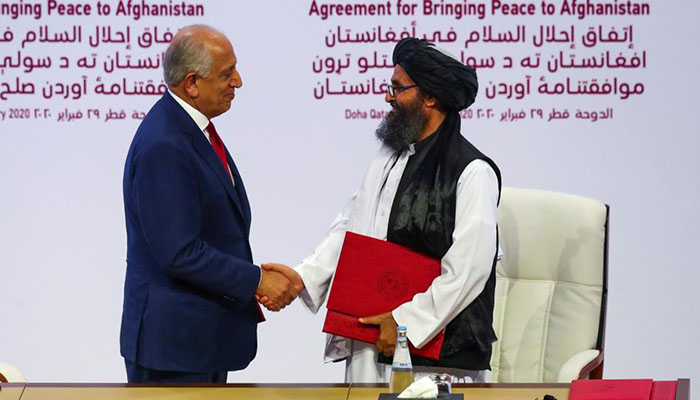
After 19 years of war, the Taliban and the United States inked a historic deal on Saturday that could possibly see a complete end to raging conflict in the country. Here are some features of the deal that ensure complete withdrawal of US forces from Afghanistan and a comprehensive, permanent ceasefire that establishes lasting peace in the restive country.
Read more: In pictures: US, Afghan Taliban sign historic peace deal
The Taliban have provided the undertaking that the Afghan soil will not be used by militants to target American soldiers or allies of the US. Furthermore, on March 10, 2020, the Taliban will take part in intra-Afghan negotiations to determine a future political roadmap for Afghanistan.
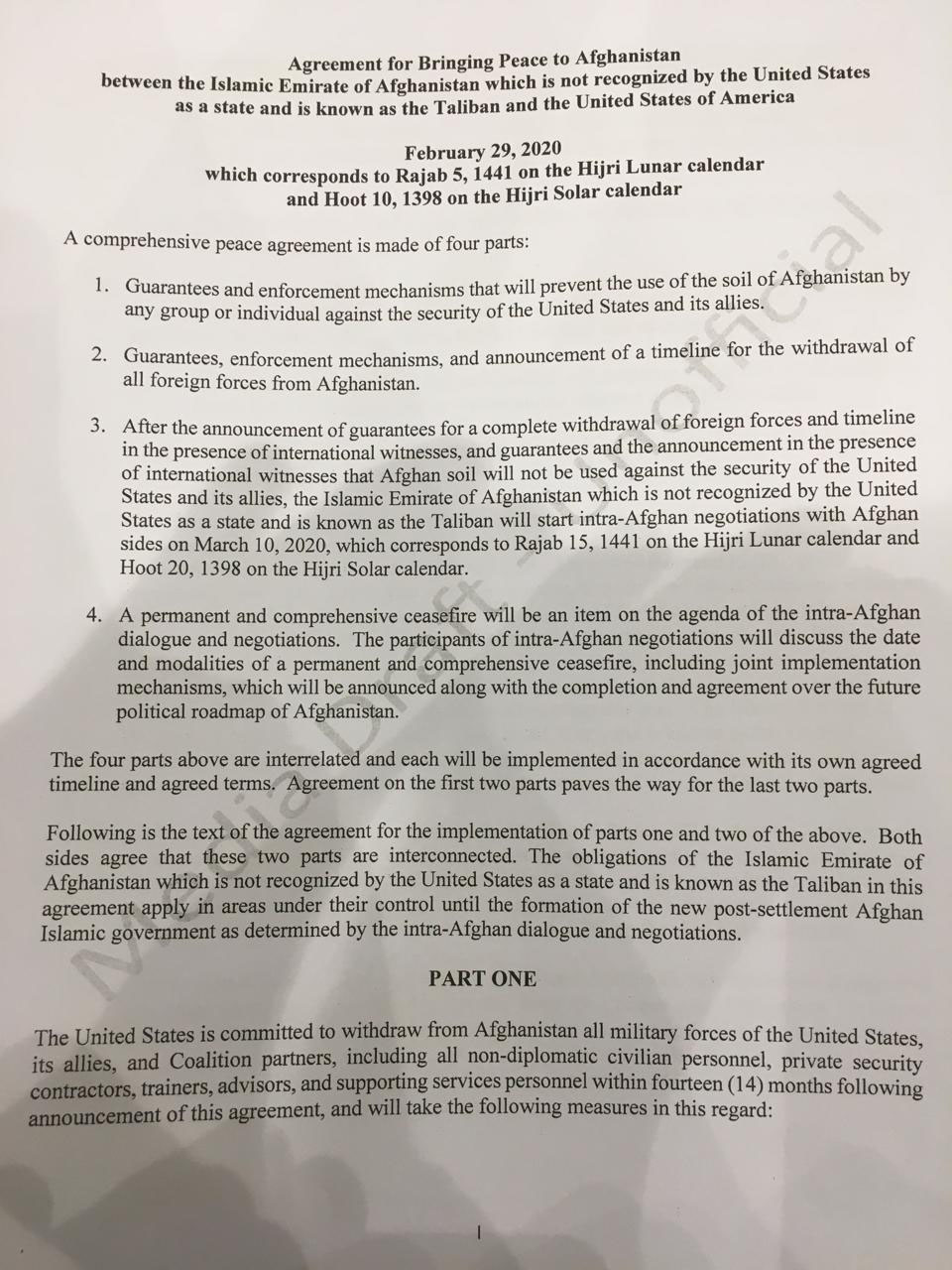
"A permanent and comprehensive ceasefire will be an item on the agenda of the intra-Afghan dialogue and negotiations. The participants of infra-Afghan negotiations will discuss the date and modalities of a permanent and comprehensive ceasefire, including joint implementation mechanisms, which will be announced along with the completion and agreement over the future political roadmap of Afghanistan," read the agreement.
According to part 1 of the agreement, the United States and Coalition partners have agreed to withdraw all military forces within 14 months of the agreement. These include "non-diplomatic civilian personnel, private security contractors, trainers, advisors, and supporting services personnel".
The US has given an undertaking to withdraw troops from Afghanistan and leave only 8.600 soldiers in the country at first. A proportionate decline in Coalition troops and allies will take place as well.
The US and Coalition troops have also agreed to withdraw all their forces from five military bases.
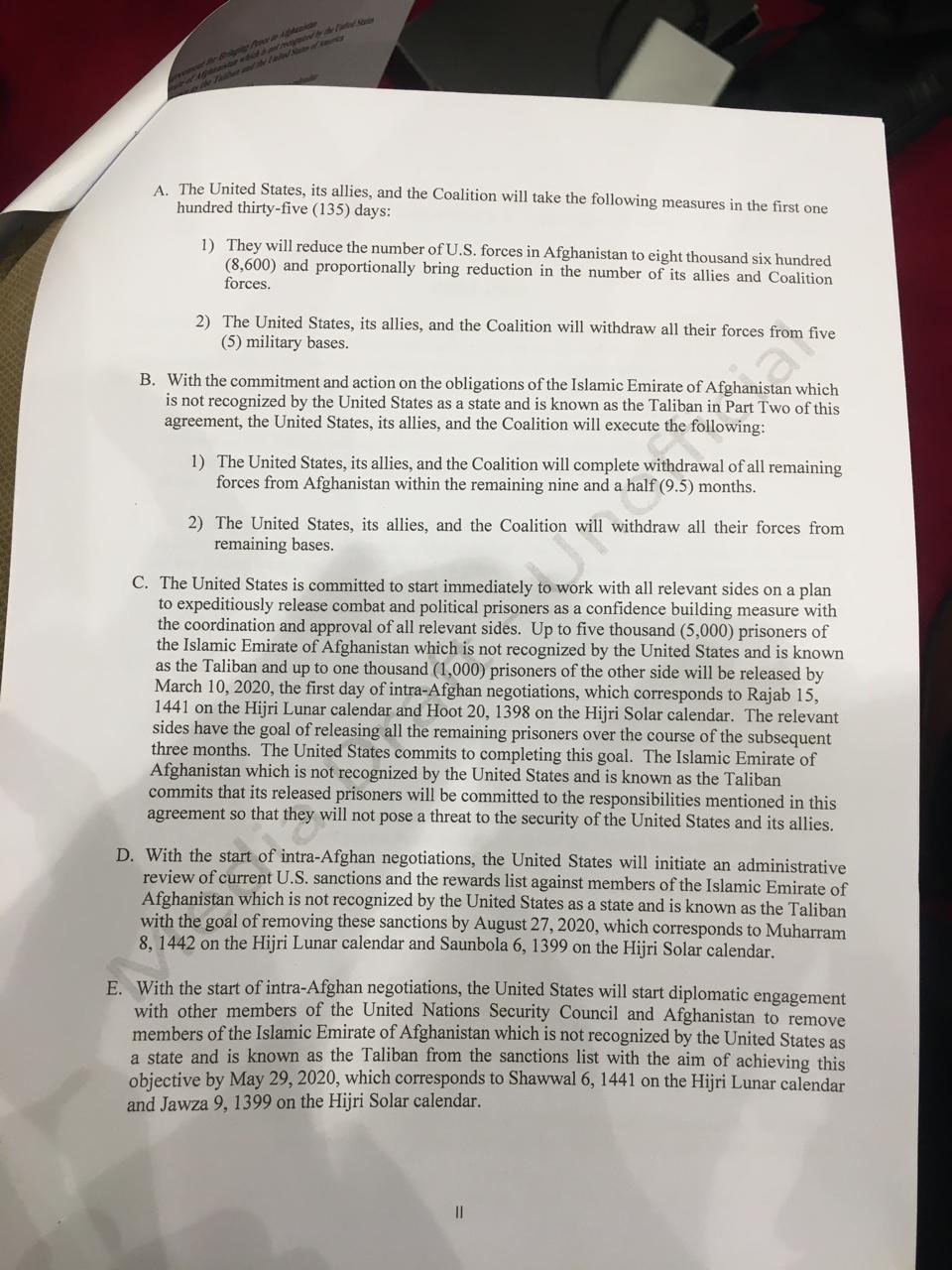
Part II of the agreement mentions that the US and Taliban have agreed to release combat and political prisoners from each side. The US has agreed to release 5,000 Taliban prisoners while 1,000 prisoners of the other side will be released by the Taliban by March 10, the first day of the intra-Afghan negotiations.
In the next nine-and-a-half months, the US and Coalition forces will withdraw all remaining forces from Afghanistan and from its military bases. The US has also agreed to review and take back sanctions against the Taliban by August 27, 2020. It will then engage with the members of the UN Security Council and Afghanistan to remove the Taliban from the sanctions list. This, the two sides have agreed, will happen by May 29, 2020.
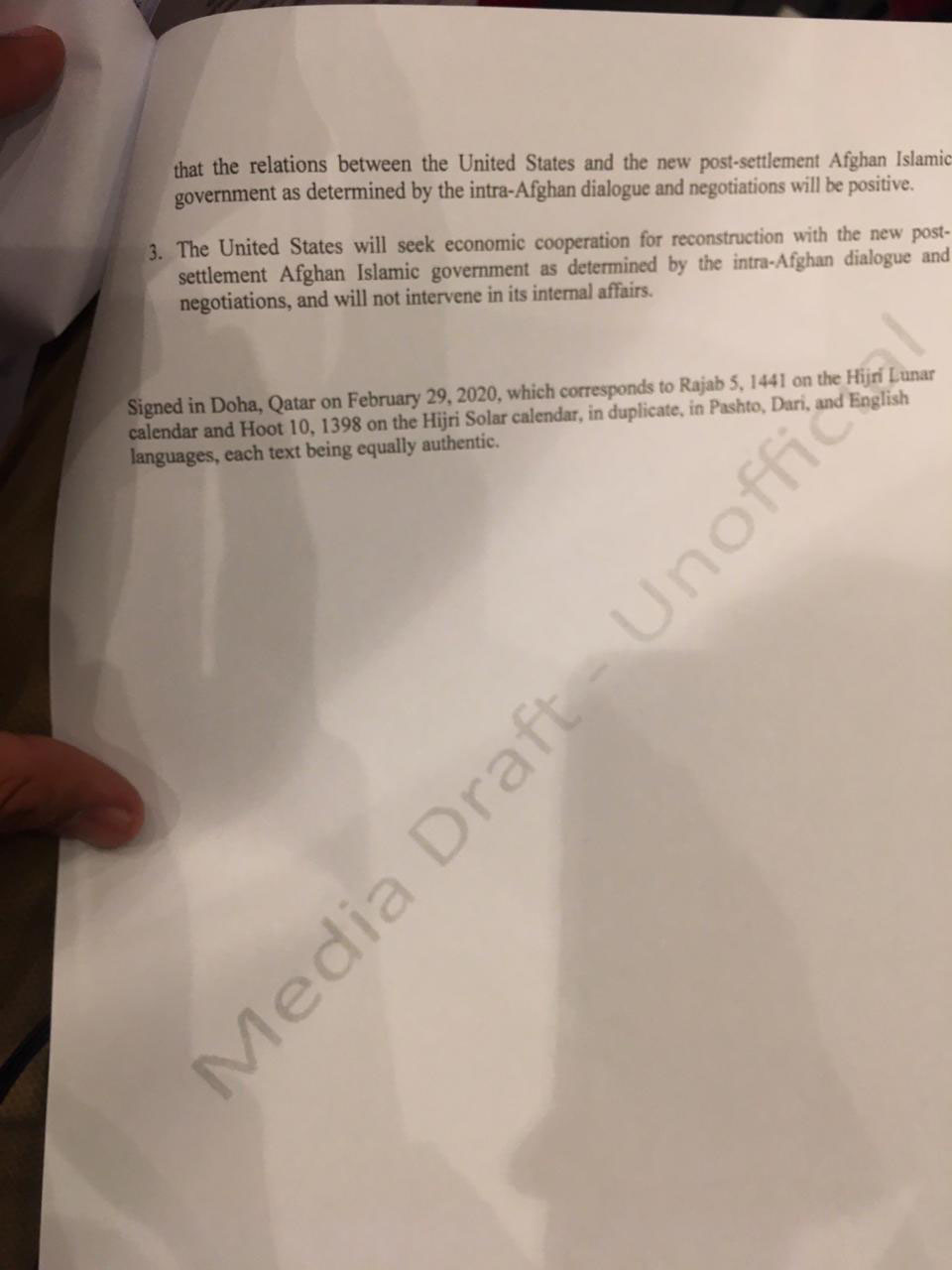
"With the start of intro-Afghan negotiations, the United States will start diplomatic engagement with other members of the United Nations Security Council and Afghanistan to remove members of the Islamic Emirate of Afghanistan which is not recognized by the United States as a state and is known as the Taliban from the sanctions list with the aim of achieving this objective by May 29, 2020," read the agreement.
The agreement states that the US and the post-settlement Afghan Islamic government will have positive relations with each other. Washington, in turn, will seek economic cooperation for reconstruction with the new government in place (in accordance with the intra-Afghan negotiations) and not intervene in its internal affairs.




